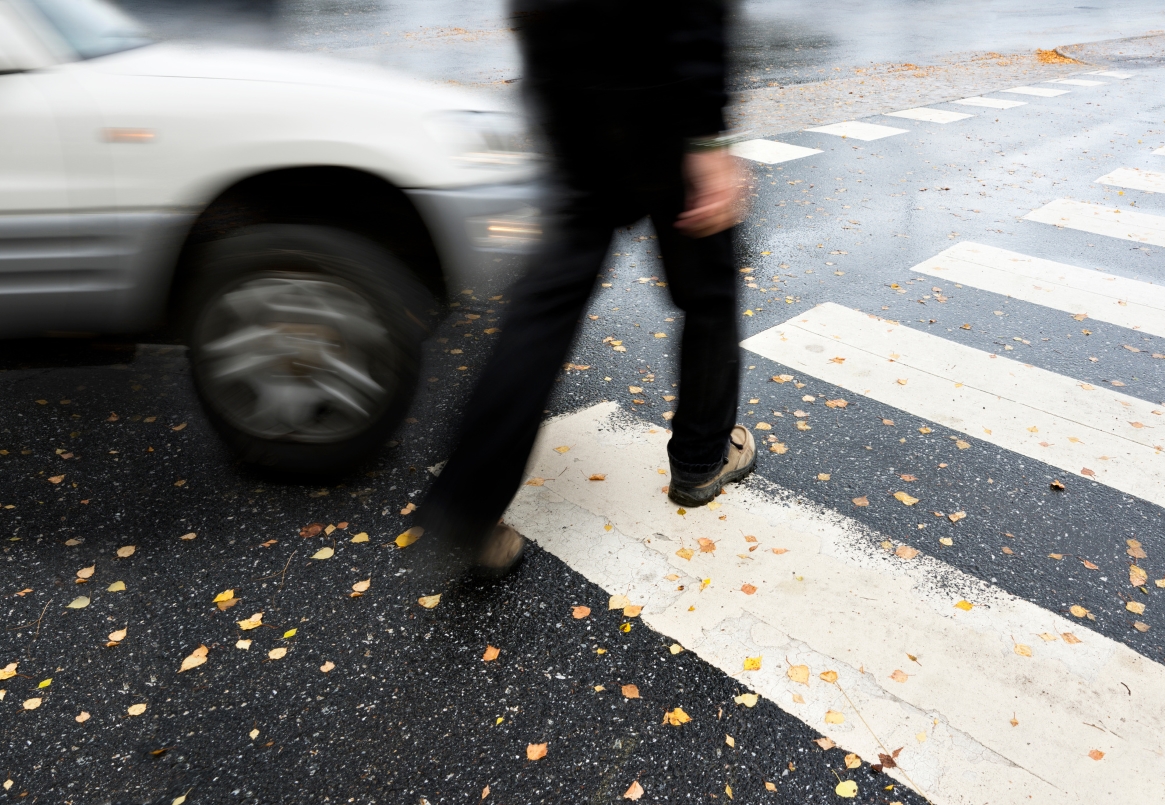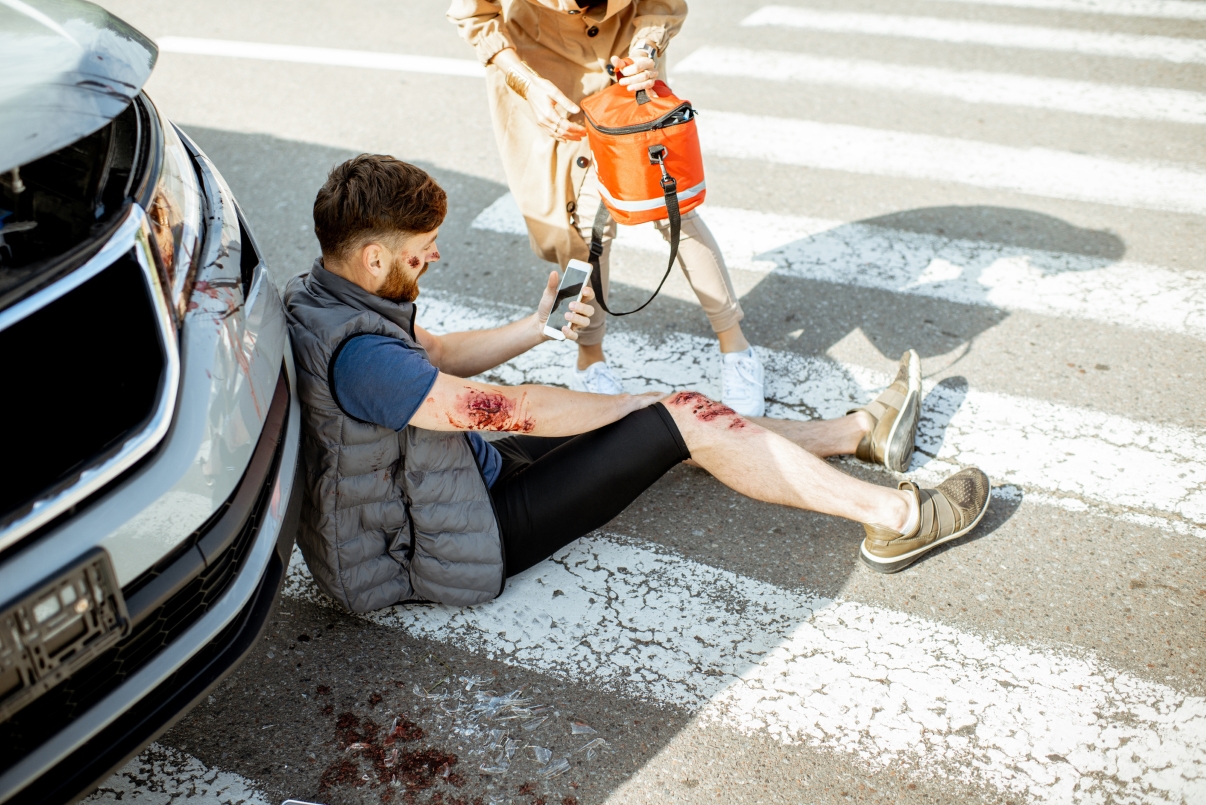Contents of this Post
ToggleIn the complex nature of city traffic, pedestrians and vehicles navigate together, guided by detailed legal and social rules. This synchronized interaction ensures safety. However, figuring out who is at fault becomes essential when this balance is disturbed by an accident. It involves analyzing the specific circumstances and applying the relevant laws to maintain the safety and order of urban traffic environments.

This guide aims to shed light on this process, providing insights into the legal frameworks, evidentiary considerations, and practical tips for identifying fault in pedestrian accidents.
Understand Right Of Way
The right of way principle is at the heart of resolving pedestrian accidents, a key rule determining precedence in traffic situations. This principle plays a critical role in assessing accidents, as it influences the allocation of fault. Understanding who had the right of way during an incident can significantly affect the determination of responsibility and the outcome of legal proceedings.
Therefore, for a comprehensive exploration of this concept, the involved party might ask this question – “Does pedestrian have right of way?” In this case, seeking legal counsel is often advisable. A knowledgeable attorney can navigate the legal intricacies, advocate on behalf of their client, and work towards a fair resolution. They can also assist in gathering and analyzing evidence, negotiating with insurance companies, and, if necessary, representing the client in court.
Familiarize The Legal Frameworks Governing Pedestrian Rights
Each jurisdiction has laws that articulate the rights and responsibilities of pedestrians and drivers. Generally, these laws underscore the importance of vigilance, caution, and respect for right of way. For pedestrians, this often means using designated crosswalks, adhering to traffic signals, and ensuring visibility.
On the other hand, drivers are typically required to yield to pedestrians in crosswalks, maintain safe speeds, and exercise heightened caution in areas with high pedestrian traffic.
Think About The Evidentiary Considerations
Identifying fault in pedestrian accidents requires a thorough examination of evidence. Key among these are eyewitness accounts, which can provide critical perspectives on the sequence of events leading to the accident. Surveillance footage, when available, offers an unbiased visual record that can corroborate or contradict testimonies.
Additionally, physical evidence at the scene, such as skid marks, vehicle damage, and personal belongings, can help reconstruct the incident. Lastly, police reports often contain valuable insights as they summarize the investigating officer’s initial findings and assessments.
Prove Negligence
In the field of pedestrian accident litigation, establishing negligence is paramount. This legal doctrine is predicated on the expectation that individuals adhere to reasonable care to prevent harm to others. Within the context of pedestrian incidents, negligence could take various forms, including jaywalking by pedestrians, drivers being distracted or speeding. Proving negligence involves clearly demonstrating that the accused party deviated from their expected duty of care, which directly led to the accident and subsequent injuries or damages.
This demonstration often requires a meticulous compilation of evidence, including eyewitness accounts, traffic surveillance, and expert testimonies, to construct a compelling narrative that unequivocally links the breach of duty of care to the unfortunate event.
Factor In Comparative and Contributory Negligence
The legal landscapes of many regions are characterized by the doctrines of comparative and contributory negligence, which play a critical role in adjudicating fault in accidents. Comparative negligence offers a nuanced approach to fault allocation, allowing for the distribution of responsibility among all parties involved proportionate to their respective contributions to the incident. This doctrine acknowledges the complexity of accidents and provides a more equitable system for determining liability.
On the other hand, contributory negligence presents a more stringent criterion, wherein any degree of fault on the claimant’s part can potentially nullify their eligibility for compensation. This dichotomy underscores the importance of a thorough understanding of these legal principles, as they can dramatically sway the direction and outcome of a case, influencing the quantum of damages or compensation awarded and the overall resolution of the dispute.
Think About The Special Considerations For Children
The legal scrutiny intensifies when accidents involve child pedestrians, given children’s inherent inability to fully comprehend risks and conform to established safety measures. This vulnerability requires a heightened duty of care from drivers, particularly in environments where children are commonly present, such as near schools and residential playgrounds. The law often imposes a more rigorous standard in these contexts, premised on the reasonable expectation that drivers should anticipate the unpredictable nature of children’s movements and exercise increased vigilance.
In legal proceedings, the failure to meet this elevated standard of care can significantly impact the assessment of negligence and fault, potentially leading to more severe repercussions for drivers involved in accidents with child pedestrians. This specialized consideration underscores the legal system’s recognition of the unique vulnerabilities of children and the collective responsibility to protect them in public spaces.
Understand The Impact Of Traffic And Safety Laws
Traffic and safety laws are foundational to adjudicating pedestrian accidents, setting the baseline for expected behavior on the roads. When a party violates these laws—be it a driver speeding through a red light or a pedestrian crossing against a signal—such actions are often considered prima facie evidence of negligence. This means the breach of law is taken as direct evidence of failure to uphold a duty of care. However, it’s crucial to note that mere compliance with traffic laws doesn’t automatically exempt an individual from fault.
The context of each incident is key; even lawful actions can be deemed negligent if they’re unsafe under the specific conditions of the accident. For example, driving at the speed limit during a heavy fog might still be considered negligent due to reduced visibility. Thus, while traffic laws provide guidelines, the ultimate determination of fault considers the totality of circumstances.
Consider The Influence Of Environmental Factors
Environmental conditions can significantly affect fault assessments in pedestrian accidents. Factors such as inadequate lighting, severe weather conditions, and blocked views can alter the responsibilities of both pedestrians and drivers. For instance, poor lighting might reduce a driver’s ability to see pedestrians, thereby increasing the driver’s duty to exercise caution.
Similarly, during adverse weather conditions like heavy rain or snow, both parties are expected to demonstrate greater care and vigilance. The impact of these environmental factors on an individual’s ability to safely navigate can either lessen or intensify their liability in an accident.
Courts and insurance adjusters often consider such environmental conditions, recognizing that the standard of “reasonable care” varies with the environmental context, influencing the determination of negligence and fault in complex traffic interactions.
Conclusion
Identifying fault in pedestrian accidents is a process that requires careful consideration of legal principles, evidentiary factors, and the specific circumstances of the incident. By keeping the information mentioned above in mind, individuals can better navigate the aftermath of such accidents. Whether a pedestrian or a driver, awareness and adherence to traffic laws and a cautious approach to road sharing can significantly reduce the risk of accidents and contribute to a safer environment for all.

